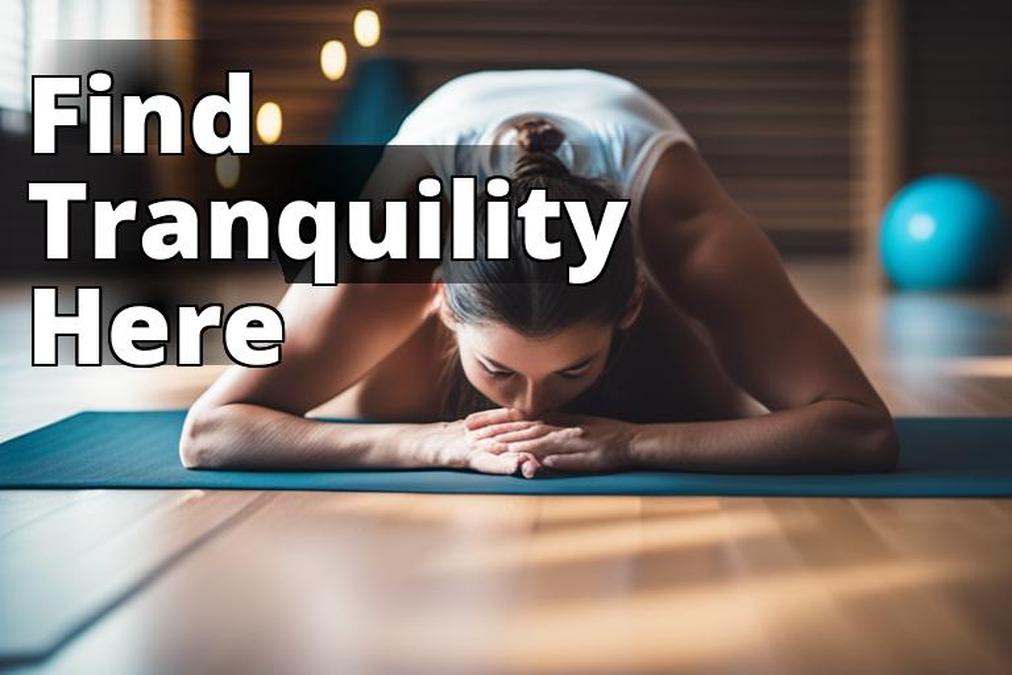Child’s Pose, or Balasana, is a beginner-friendly yoga pose that provides relaxation and rest. It is often used as a resting posture during

How to Do Child’s Pose – Balasana
Getting into Child’s
- Begin on your hands and knees, with your wrists directly under your shoulders and your knees directly under your hips.
- Bring your big toes together and separate your knees about hip-width apart.
- As you exhale, lower your hips back towards your heels and stretch your arms out in front of you.
- Rest your forehead on the floor, or on a prop such as a folded blanket or block.
- Allow your entire body to relax, and focus on your breath as you hold the pose for several breaths or longer.
If you have knee or ankle pain, you can place a blanket or pillow under your knees for support. You can also use a prop under your forehead if it doesn’t comfortably reach the floor. As you become more comfortable with the
Child’s Pose – Balasana: The Ultimate Guide to Yoga’s Most Restorative Asana
- Child’s Pose is a beginner-level yoga pose for resting and relaxation.
- It stretches and relaxes the body, reduces stress and anxiety, and improves digestion.
- The article includes step-by-step instructions, benefits, precautions, sequencing and variation ideas, FAQs, and personal experiences.

Benefits of Child’s Pose – Balasana
Child’s Pose is often used as a resting posture during
Stretches the Hips, Thighs, and Ankles
Child’s
Relieves Tension in the Back, Neck, and Shoulders
Child’s
Promotes Relaxation and Reduces Stress
Child’s
Improves Digestion
As you compress your abdomen in Child’s
Spiritual Benefits
Child’s

Precautions and Contraindications
While Child’s
Knee or Ankle Injuries
If you have an injury to your knees or ankles, you may need to modify Child’s
Pregnancy
If you are pregnant, you may need to modify Child’s Pose by placing a prop under your forehead or avoiding the pose altogether. It’s important to talk to your healthcare provider before starting or continuing a
Low Blood Pressure
If you have low blood pressure, you may need to avoid holding Child’s
Health Conditions
If you have any other health conditions, such as high blood pressure, heart problems, or herniated discs, it’s important to consult with your healthcare provider and a qualified yoga teacher before practicing Child’s
Tips and Tricks for Practicing Child’s Pose – Balasana
Here are some tips and tricks that can help you get the most out of your Child’s
Use Props
Try using props such as a folded blanket or block under your forehead or chest if you have trouble relaxing into the
Incorporate Breathing Techniques
As you hold Child’s
Add It to a Yoga Sequence
Child’s
Frequently Asked Questions
How Long Should I Hold Child’s Pose?
You can hold Child’s
How Often Should I Practice Child’s Pose?
You can practice Child’s Pose as often as you like – it’s a great pose to incorporate into your daily
How Do I Know If I’m Doing Child’s Pose Correctly?
If you’re new to yoga or to Child’s
| Variation | How to Do | Benefits |
|---|---|---|
| Supported Child’s Pose | Place a bolster or several blankets under your torso and rest your forehead on it. | Offers additional support and can help to deepen relaxation and release tension in the back, neck, and shoulders. |
| Child’s Pose with Eagle Arms | Bring your arms behind your back and wrap your right arm under your left and then bring your hands to your shoulders. Hold for a few breaths and then switch sides. | Stretches the upper back and shoulders and improves posture. |
| Child’s Pose with Extended Arms | Stretch your arms out in front of you and interlace your fingers. Press your palms forward and round your upper back. | Stretches the shoulders and upper back and helps to improve posture. |

Sequencing and Variations
Child’s
Child’s Pose to Downward Facing Dog
From Child’s
Child’s Pose with Twist
From Child’s
Extended Child’s Pose
From Child’s

Personal Experiences
Many yoga practitioners have found Child’s Pose to be a helpful and restorative posture in their practice. For example, in a Yoga Journal article, writer Elizabeth Marglin shares how practicing Child’s Pose helped her to find comfort and healing after a difficult breakup. By allowing herself to fully release into the pose and feel her emotions, Marglin found that she was able to move through her pain and find a sense of peace.
The Power of Child’s Pose – Balasana: A Personal Experience
Child’s Pose – Balasana has been an integral part of my
One particular experience stands out in my mind. A few years ago, I was going through a difficult time in my personal life, and my anxiety levels were through the roof. I was having trouble sleeping, eating, and focusing on anything other than my worries.
During one of my regular yoga classes, the teacher led us through a sequence that included several rounds of Child’s
After the class, I felt lighter and more at ease than I had in weeks. From that day on, I made a commitment to incorporate Child’s
This
Conclusion
In conclusion, Child’s Pose – Balasana – is a valuable addition to any







